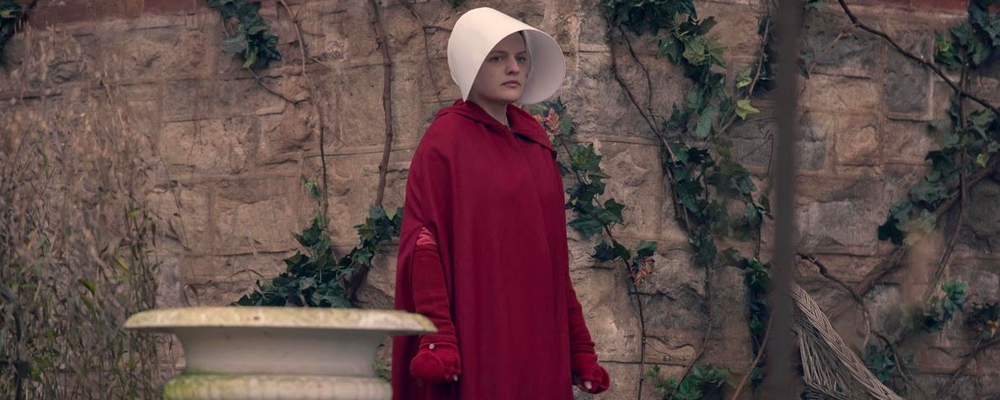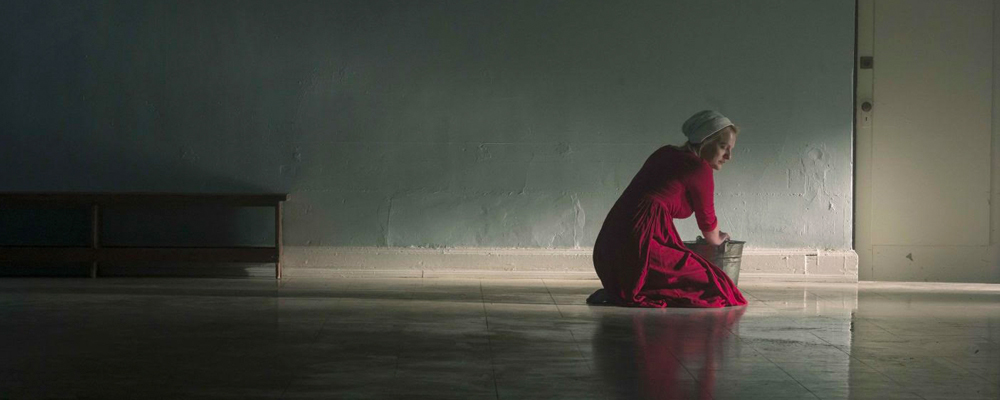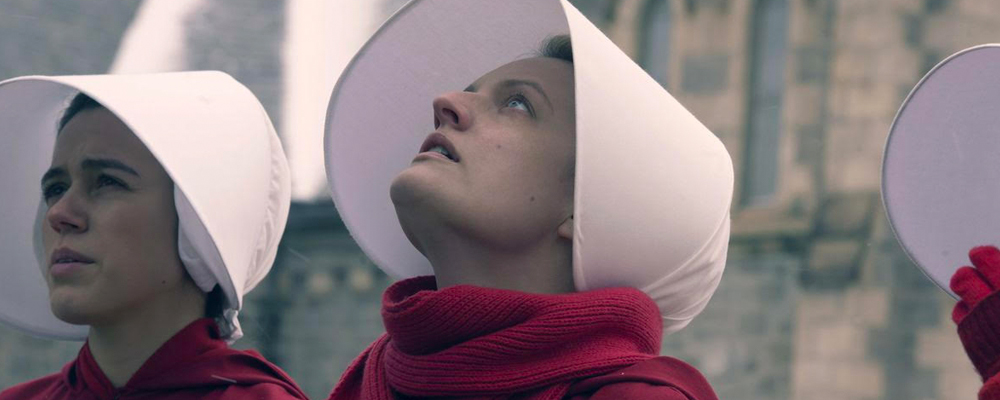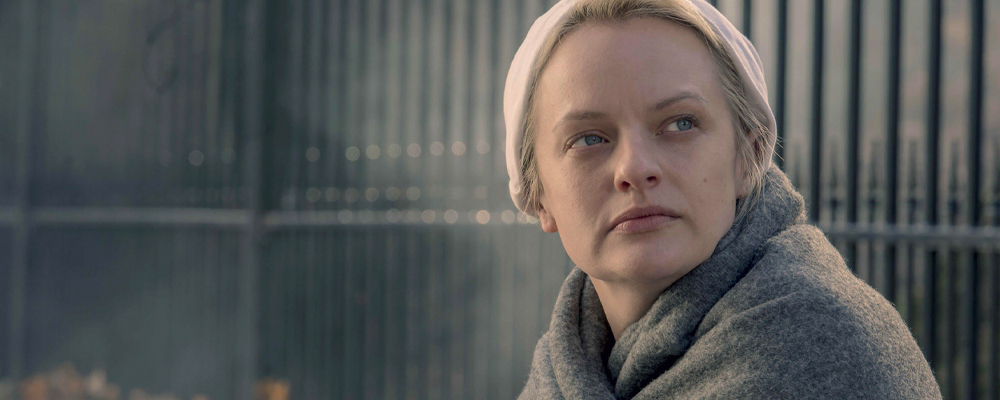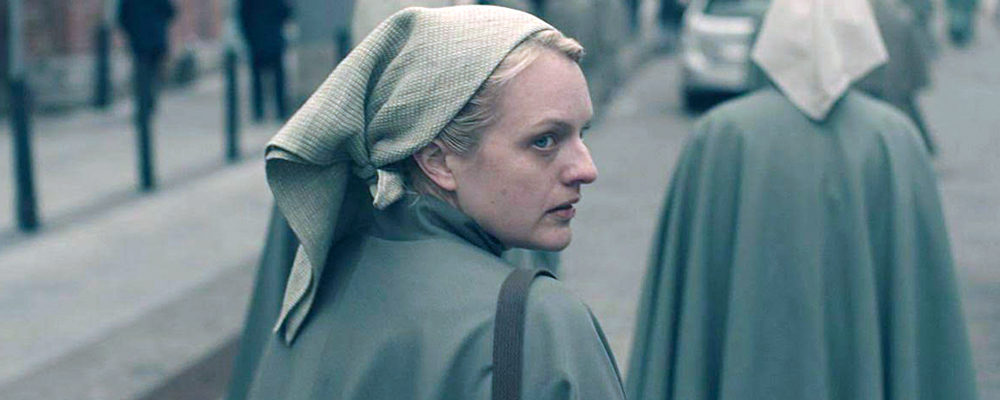‘The Handmaid’s Tale’ Season 3: The Resistance Begins to Take Shape
Alci Rengifo
It is the images from this new season of “The Handmaid’s Tale” that linger in the memory. Rows of women with their mouths encaged, the Lincoln Memorial blown to pieces, the Washington Monument turned into a giant cross overlooking the capital. These are powerful, dystopian moments in a show that is increasingly about what it conveys through environment as opposed to just plot. This is the third season of Hulu’s most notable drama series, and the second to continue an original expansion of Margaret Atwood’s classic novel. One can sense intense story meetings to figure out how to keep the vision going, considering the first season covered the entire book. But it still succeeds in creating palpable atmosphere and tension, imagining a future sadly seeming more plausible every day.
June (Elisabeth Moss) remains in Gilead, the theocratic regime that used to be the United States. At the end of last season she had decided to stay after handing her baby, Nichole, to Emily (Alexis Bledel), who has made it across into Canada. Now June has been transferred to the home of a new commander, Joseph Lawrence (Bradley Whitford), who at times seems to understand why women flee Gilead, yet imposes his own, sexist and stern will on the women in his home. June’s previous commanders, Fred (Joseph Fiennes) and Serena (Yvonne Strahovski), for whom she had Nichole, believe the baby was kidnapped. Of course Serena had secretly handed Nichole over to June with the idea that they would escape together. As Serena retreats to see her mother and Fred figures out how to respond to the kidnapping, we get updates on Emily’s new life in Canada. But over Lawrence’s home, June begins to realize the women in this house are also planning escapes, not to Canada, but to join a growing underground resistance.
Like all good dystopia the effect of “The Handmaid’s Tale” rests largely on how believable it continues to be. This is a 13-episode season with the first six made available for review, and in those early episodes what dominates more than the story is the overwhelming tone. June goes shopping to a supermarket with bare essentials, down the street women are hanging for having helped someone escape. The voiceover informs us that such rebels are not called rebels or “martyrs,” but “heretics,” lest the authorities want to inspire anyone. A sense of always being watched hovers over every scene and close-ups of Elisabeth Moss reactions say more than script dialogue ever could, in particular a striking moment when Fred and Serena go on TV to plead with Canada’s government to return Nichole. The sixth episode has some of the most impactful moments as June joins the couple to Washington, D.C. and the seat of government takes on a fascist decorum. Rows of handmaidens bow before a shattered Lincoln Memorial, their mouths shut with strange, cage-like grips, and in the distance the Washington Monument has become an enormous cross. Even that old villain, Aunt Lydia (Ann Dowd), who zaps June with an electric prod in an earlier episode, can’t help but look disturbed at the capital’s handmaidens.
This new season of “The Handmaid’s Tale” will no doubt draw efforts to find references to our current predicament. The sudden wave of anti-choice laws in Alabama and elsewhere are raising serious discussions about the curtailing of women’s rights and the imposition of religion on legislatures. Margaret Atwood’s novel undoubtedly has moments that could be seen as eerily prophetic. Yet this third season is not all despair, with an emerging storyline being the presence of a growing resistance movement. June begins to search for women not as viable candidates to escape, but as potential contributors to the revolution. A physics teacher is smuggled out because she can make bombs, and by the sixth episode June finds teachers and doctors who could also be valuable. If Atwood’s original vision was masterfully bleak, the series, having to find fuel for the story to keep going, is edging closer to imagining how the women of Gilead will fight back.
A strong combination of sharp writing and acting with presence also elevates the material. Some of the best moments are between June and Lawrence, played with a menacing and cruel intelligence by Bradley Whitford. Lawrence will sit with other officials in his home, making plans about how to deal with a rebellion, and he shows that “women can be useful” by ordering June to grab a volume of Darwin for him from a shelf. But later he will forgive her for allowing an injured escapee into the house. Lawrence is not so much a cynic as a Machiavellian, coldly understanding how authority works. With great villainy he also delivers sexist opinions, asking June why women use their bodies to get what they want and then complain about being objectified. The other key relationship is between June and Serena, who decides to support Fred in trying to get Nichole back. Eventually she and June have a verbal clash in Washington, with June exposing her as a selfish, cold-hearted person who doesn’t even know how to love.
Emily has some strong moments as well, as we see her enter Canada as a refugee and receive proper medical care from authorities. So far we get too little of June’s husband Luke (O-T Fagbenle), who is being reduced more and more to a mere side character. The poor guy is stuck in democratic and free Canada of course, while June deals with life in totalitarian Gilead.
“The Handmaid’s Tale” stays true to a disturbing vision of an America we hope never comes to pass in this well-crafted third season. However the story is slowly beginning to take a new pace, as winds of revolution begin to emerge. Fittingly all but one episode of these first six are directed by women. Some of the cruelty and shocks from the last season are turned over for the hope that dark times inspire rebellion. None of the episodes ever bore, instead they unnerve with the sense that this could very well happen, but this time around the handmaidens are also finding the will to stop the madness.
“The Handmaid’s Tale” season three begins streaming June 5 on Hulu with new episodes premiering every Wednesday.

